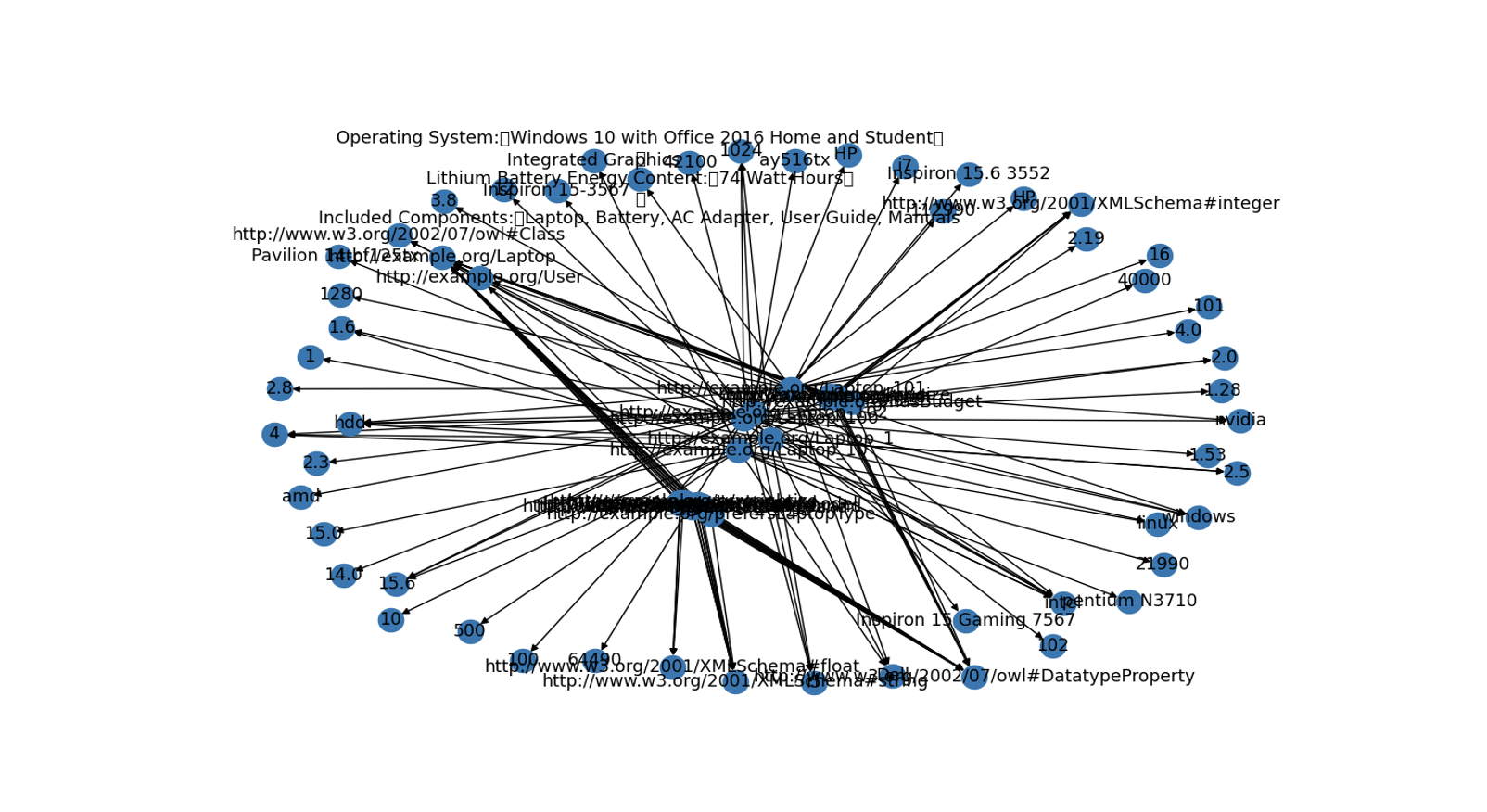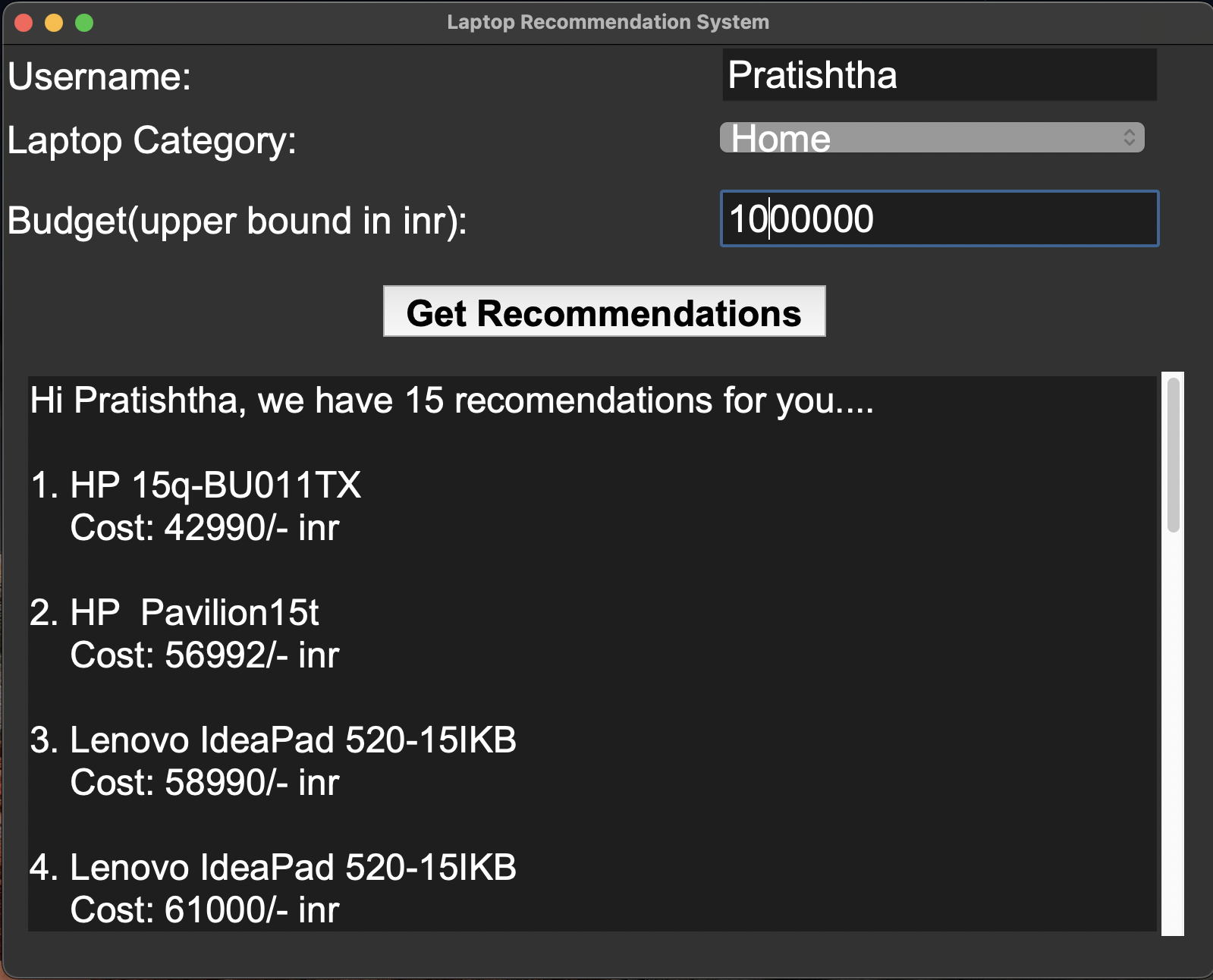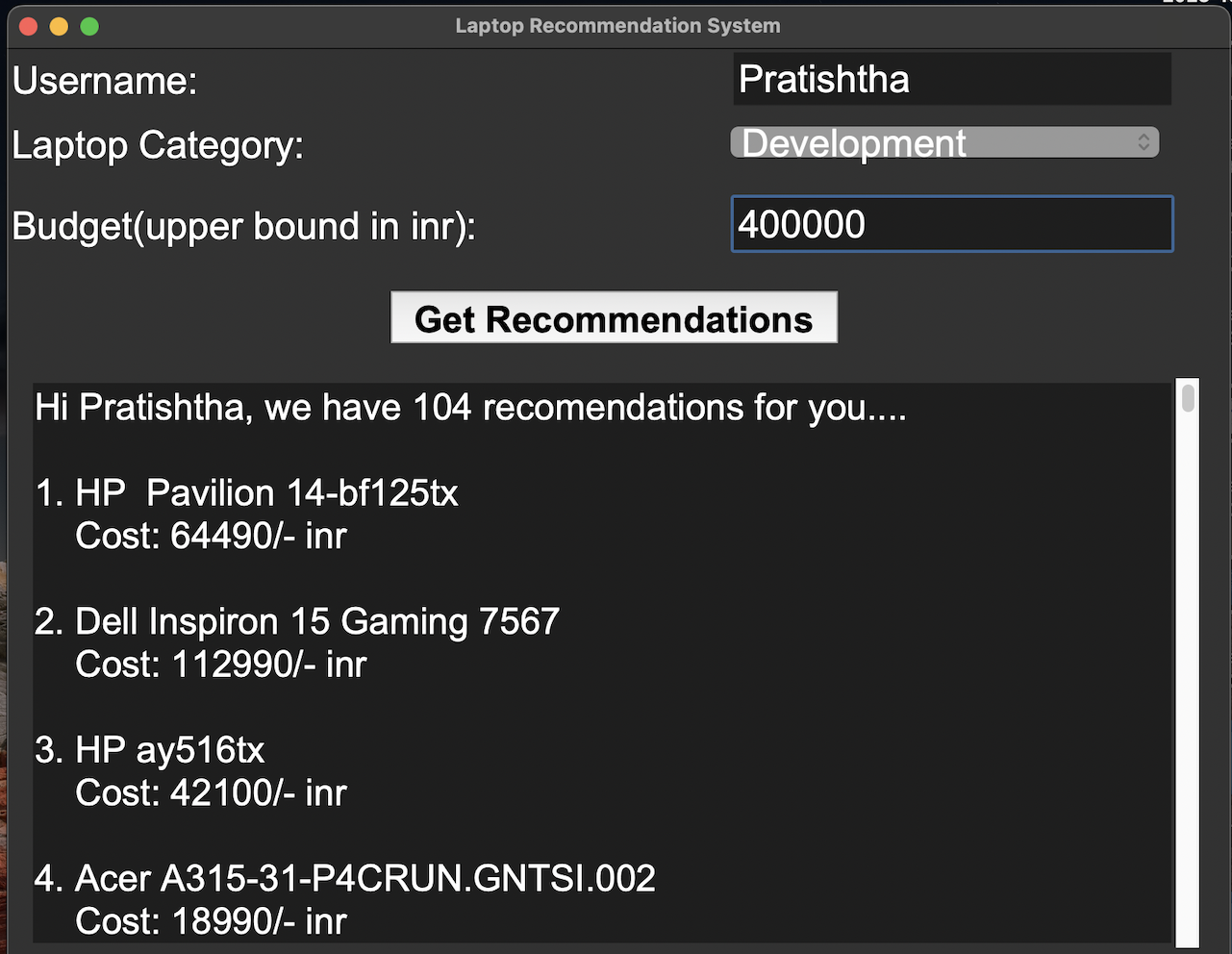Introduction
This project focuses on developing an expert recommendation system for laptops using Semantic Web technologies. Leveraging RDF and OWL, the system represents laptop specifications, user preferences, and budget constraints. Through SPARQL queries and semantic reasoning, the system dynamically generates personalized recommendations, providing users with tailored suggestions based on their unique preferences and requirements.
Below is the User Interface
Solution Approach
-
Defining an ontology using RDF and OWL to represent laptop specifications, user preferences, and relationships within the domain.
-
Representing laptop data and user profiles in RDF format, incorporating instances of the defined ontology.
-
Adding Semantic reasoning by helping it understand more things about laptops and users. This way, it can figure out additional details and connections on its own, improving how it gives recommendations.
-
Implementing SPARQL queries to retrieve relevant information from the RDF data store, allowing the system to generate recommendations based on user-specified criteria.
-
Developing a user-friendly interface where users can input preferences and view personalized recommendations generated by the system.
Below is the graph visualization of all the data.

Below is the single node visualization of all the data.

Lessons Learned.
- Semantic Web Technologies
- Personalization with SPARQL Queries
- Dynamic Recommendation Generation
- User-Centric Design
- Semantic Reasoning
Embracing Semantic Web technologies has proven instrumental in enhancing data interoperability and knowledge representation. The adoption of RDF (Resource Description Framework), OWL (Web Ontology Language), and related standards has facilitated a more structured and meaningful organization of data, enabling efficient data integration and retrieval.
The utilization of SPARQL (SPARQL Protocol and RDF Query Language) for personalized data retrieval has demonstrated its effectiveness in tailoring information to individual user preferences. Crafting SPARQL queries that dynamically adapt to user-specific requirements has empowered the system to provide more relevant and personalized content, contributing to an enriched user experience.
The implementation of dynamic recommendation generation mechanisms has been a key takeaway. By leveraging semantic data models, the project has successfully generated real-time recommendations based on user behavior, preferences, and contextual information. This dynamic approach ensures that recommendations remain current and aligned with users' evolving interests.
The emphasis on user-centric design principles has significantly influenced the project's success. Understanding and incorporating user needs and feedback throughout the development process have led to an interface that is intuitive, user-friendly, and tailored to the target audience. This iterative design approach has resulted in higher user satisfaction and increased adoption of the Semantic RDF system.
The incorporation of semantic reasoning capabilities has played a pivotal role in deriving implicit relationships within the data. By employing inferencing techniques, the project has enhanced the depth of knowledge discovery, enabling the system to draw logical conclusions and provide a more comprehensive understanding of the information. This has not only improved the accuracy of results but has also expanded the system's capacity for intelligent decision-making.



